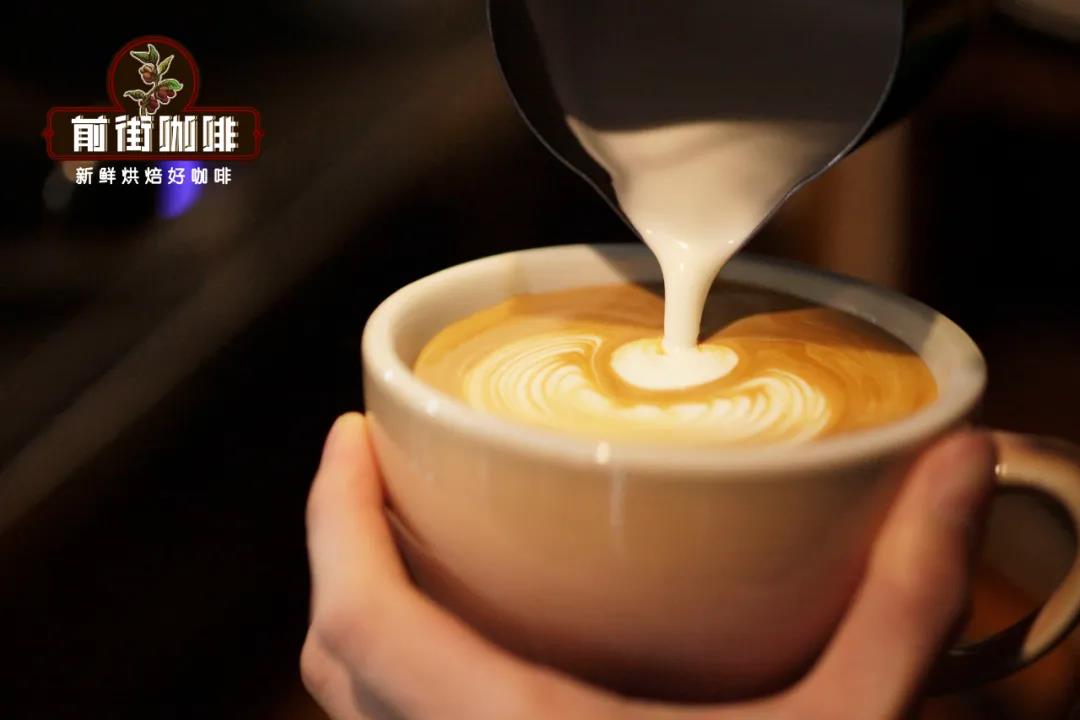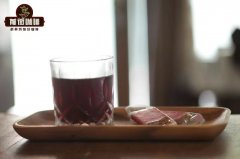What are the steamed milk and microbubbles in espresso? how are microbubbles produced in milk?
Adding milk to coffee is as old as coffee itself. But it wasn't until the last century or so that we became really interested in how to add milk to coffee. In the past few decades, we have also begun to care about whether the milk is dairy or vegetable.
Qianjie Coffee in this article aims to help understand the effect of milk on coffee and discuss its various forms. Today, adding coffee to milk has become an art. Making patterns with steamed milk from cappuccino is one thing. There are many kinds of milk we can use. The purpose of milk is for beauty and flavor.
Why do we put milk in our coffee?
The original intention of adding milk to coffee is to help eliminate all the strength and bitterness of coffee. This is mainly due to the natural combination of protein, salt and fat in milk. They interact with caffeine and coffee solids in brewed coffee to round the edges.
When we first discovered coffee, no one knew whether it was poorly made, or whether people always liked slightly milder coffee. But this is the end result, and I think a lot of people are happy about it.

So what is steamed milk?
Steamed milk is most commonly seen in the composition tables of most espresso drinks. Such as latte coffee, Australian white coffee. Hand-brewed coffee is almost non-existent in the boutique coffee world.
Steamed milk may sound unimpressive, but it is actually steamed milk. It means that milk passes through very hot steam, so it is heated.
Hot milk will be mixed with liquid espresso in the drink. The foam will be at the top and mixed with Klima. In fact, if we want to know exactly what happens to milk, the story is a little different.
When you insert a steam stick into a milk can, you get two different proportions of milk.
One is milk foam, which is the result of adding hot air to milk with a magic wand. It is most common on the top of milk. The denser the foam, the lower its position in the milk can.
The foam formed at the top is dry foam, which is usually placed on top of the drink (there will be more in a minute).
At the bottom, you will get hot milk, which is not blistering and there is no need to try to blister further. If you work too much, you risk burning the milk.
What is a microbubble?
Microbubbles are somewhere in between, not milk bubbles or liquid milk. This is a very fine milk bubble, more like a thick milk, filled with the smallest possible bubbles.
This process occurs naturally when steaming milk, but the amount you get depends on your skills as a barista and the amount of fat in the milk you use.
So, in some drinks-- such as pure white-- you need microbubbles, that's all. No steamed milk, no foam. It's just direct cream milk, which is not easy to achieve.
It is never possible to turn all the milk in the pitcher into micro-foam, but it can turn a lot of milk into foam.
In most cases, micro-foams occur when the nozzle of the steam stick goes deeper into the milk. Not at the bottom of the milk, but not at the top either. The closer you get to the top of the milk, the more regular the form / milk will be. And it's not as creamy as microfoam.
Important Notice :
前街咖啡 FrontStreet Coffee has moved to new addredd:
FrontStreet Coffee Address: 315,Donghua East Road,GuangZhou
Tel:020 38364473
- Prev

How about cold coffee? can cold coffee last a long time? what kind of ice is best for iced coffee?
Cold coffee is definitely a popular coffee drink in summer. it is basically soaked in the refrigerator overnight through a coffee filter. Either hand-brewed coffee or dripping coffee can be prepared, which takes a long time (12-18 hours), but tastes great, so depending on how long you are willing to prepare iced coffee in advance, this may be an attractive choice. Someone
- Next

Can the coffee powder be brewed again? does the second brew coffee have caffeine and coffee oil?
In the front street coffee, the same question is often asked, can the coffee be brewed again? Can I soak the coffee grounds for a second time after soaking? If you want to know if you can reuse these coffee grounds for another cup of coffee, let Front Street Coffee explain it for you. This is what everyone who drinks hand-made coffee has asked before. Especially if you like tea and tend to repeat
Related
- What brand of black coffee is the most authentic and delicious? what are the characteristics of the flavor of the authentic Rose Summer Black Coffee?
- Introduction to the principle and characteristics of the correct use of mocha pot A detailed course of mocha pot brewing coffee is described in five steps.
- Which is better, decaf or regular coffee? how is decaf made?
- How much is a bag of four cat coffee?
- How about four Cat Coffee or Nestle Coffee? why is it a cheap scam?
- Which is better, Yunnan four Cats Coffee or Nestle Coffee? How about cat coffee? is it a fake scam? why is it so cheap?
- How about Cat Coffee? what grade is a hoax? which instant coffee tastes better, four Cat Coffee, Nestle Coffee or G7 coffee?
- Process flow chart of coffee making-Starbucks coffee making process what coffee tastes good at Starbucks
- The top ten best coffee beans in the world Rose summer coffee or Tanzanian coffee tastes good
- Yunnan four cat coffee is good to drink?_four cat coffee is a big brand? four cat blue mountain coffee is fake?

